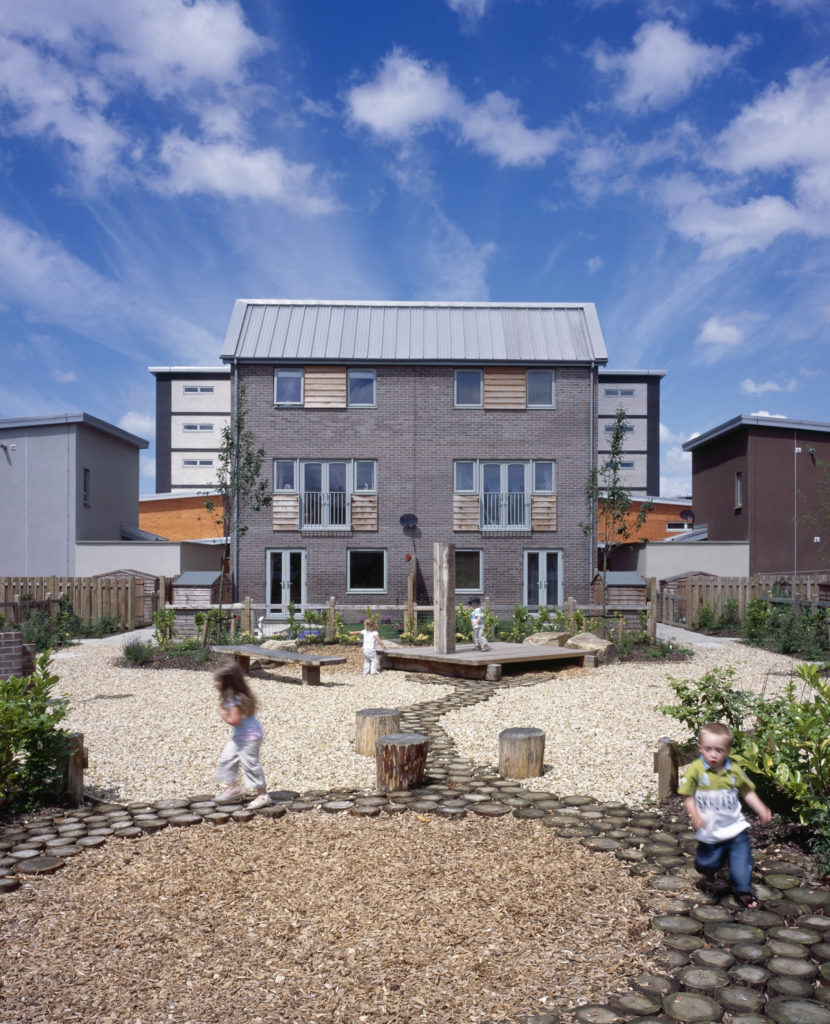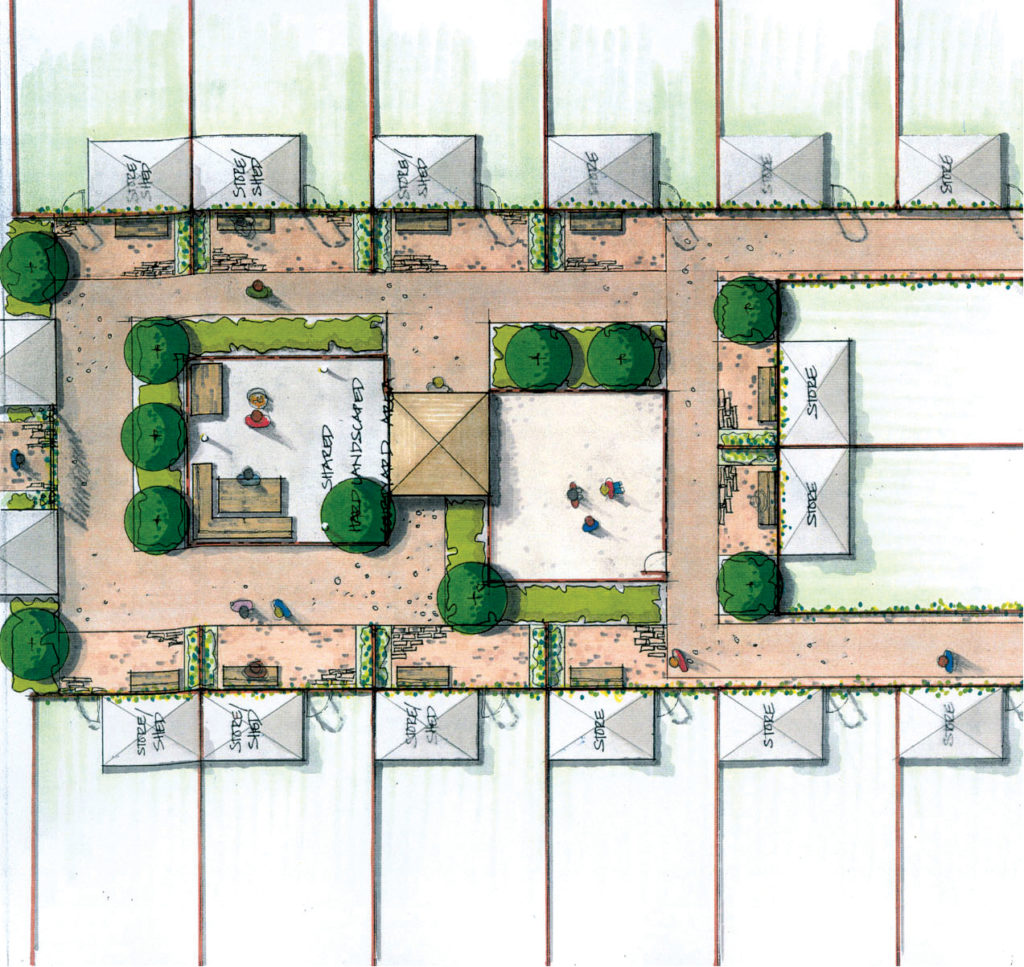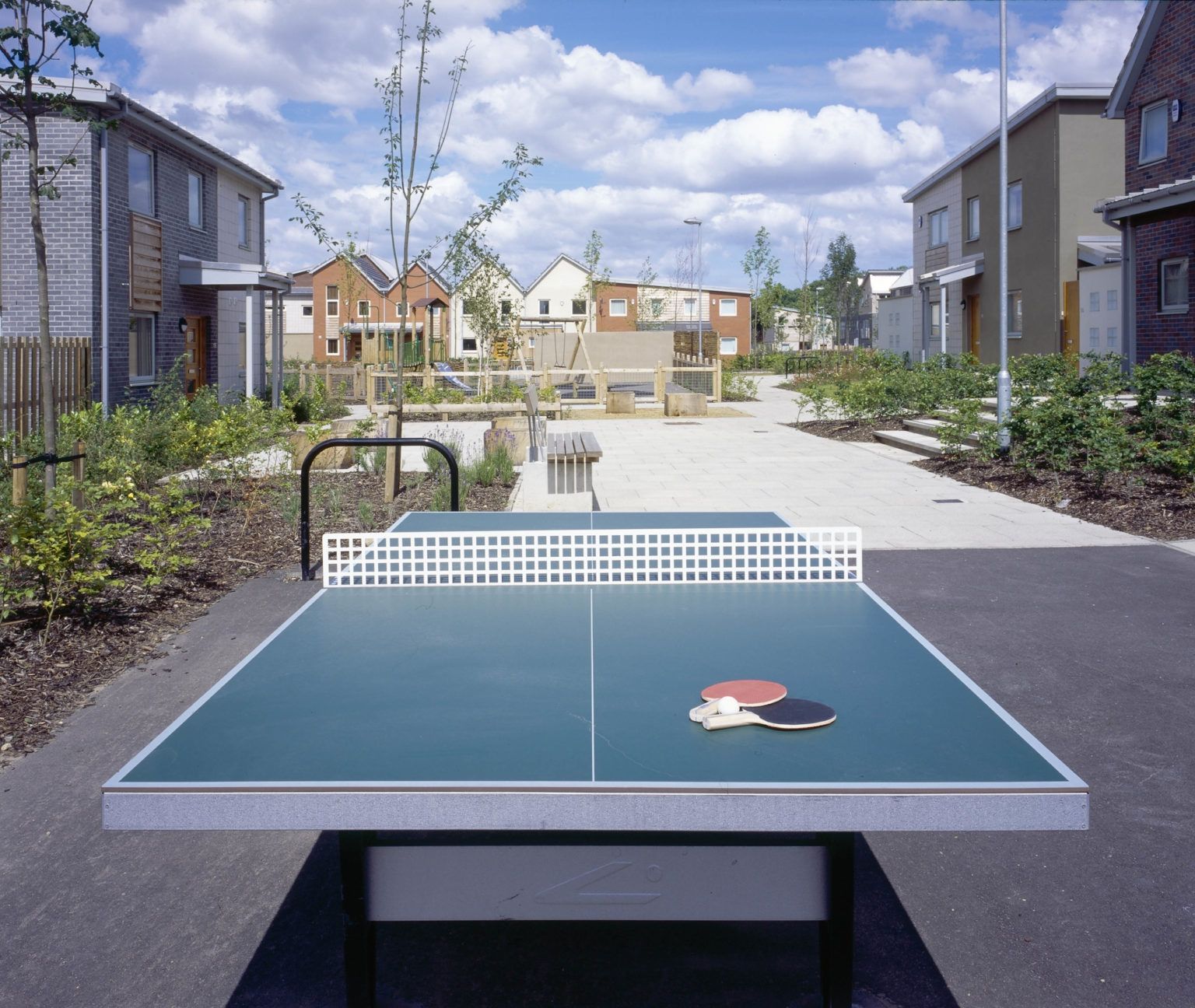This was HemingwayDesign’s first foray into the world of large-scale housing-led development but our constant challenging of the ‘normal standards’ (of the time) meant we were able to able to push the boundaries in many areas.
We encouraged the developer and the landowner (Gateshead Council) to look at things with a fresh approach. This included not only the contemporary ‘European’ aesthetic but also the design, layout and adopting a ‘Homezone’ approach including traffic calming, adoptions, car parking, cycling, refuse collection and integrated play and landscaping. The ‘normal standards’ were put to one side, and a fresh approach was adopted.
The final result of that first meeting is Staiths South Bank, a 760-home development on the banks of River Tyne, Gateshead.
The vision was a simple one: to create a development that offers choice. Choice of elevation and layout; choice in the mix of house types; and choice in the way that people live their lives.
Staiths South Bank marries contemporary design with a nostalgic nod to community values and community facilities – timeless ideals with trailblazing ideas. It is a development where everyone can recognise their own home because no two look the same, where children can play safely and free from cars, and where private gardens open out into shared spaces where residents can get to know each other.
Landscaped corridors focusing on play areas which call upon children’s imagination by placing adventurous and unusual equipment within the streetscape take priority over the car and other vehicles delivering “Play Streets” wherein vehicular speeds are circa 5mph.
Shared communal courtyards provide communal garden areas for the houses in the immediate vicinity – semi-private areas that are accessed and overlooked by 20-25 units around a series of courtyards. Communal barbeques were introduced to the shared courtyards – the success of this approach has been documented in the Arts Council on-line publication ‘The Power of the Barbeque’.
Incidental street furniture – small seating areas and play facilities are introduced almost piecemeal into the landscaped pedestrian streets. A ping-pong table and other games take their place in the general thoroughfare. These ‘installations’ all contribute to the ‘sense of place’ – each area providing a different set of experiences yet within a fully integrated whole.
Fully integrated hard and soft landscaping promoted new traffic calming techniques, and standard Adoptions criteria were reviewed – to reduce traffic speeds, simplify services distribution and introduce low car ownership throughout the site.
Normal refuse collection policies were relaxed. Residents are expected to take their domestic refuse to communal Refuse Collection points provided in screened areas close to the landscaped courtyards. Most of the” internal roads” do not therefore need to accommodate large bin wagons with their demanding turning circles.
Pedestrian, cycle (part of the National Cycle Network) and bus routes (available within a 400m walk) – connecting residents to Gateshead and Newcastle centres.
Car ownership is restricted to one car space per household, with 25% visitor parking. Reduced car ownership and careful design encourages low car speeds which enhance pedestrian primacy and play safety.
The project has won a number of national awards including the ‘Best Housing Development of the Year’ in the UK.
Read The Staiths retrospective here, and see what the BBC had to say about it here.


“I lived on The Staiths from 2011 to 2013 when working in the North East. Moving from Liverpool I had arranged to spend two days in the area and had a list of properties booked in, this was the first. I’ll never forget the day I drove onto the estate for the property viewing; I was immediately struck by the layout and style, beautiful established landscaped areas mixed with communal play and social areas that gave the feel of community and quality of lifestyle.The different many house and apartment designs also gave a sense of style, care and uniqueness which was a lovely tonic from the uniform ‘pack em in’ style of some housing developments. The creative flair really appealed to me. I didn’t even bother to look at the other properties! I loved every minute of living there and felt like I had the best of both worlds. Minutes from the city but the feeling of living in a green oasis when enjoying being home. The nicest place I’ve ever lived.”
Former Staiths resident.
AWARDS
- Silver Award at the ODPM Building For Life Awards 2005
- Best Housing Led Regeneration Award at Building Magazine’s Regeneration Awards 2005
- Finalists at Local Authority Building Control National Built In Quality Awards in 2005
- Finalists at The Journal’s Landmark Awards in 2005
- Overall Award at The Journal/Evening Gazette 21st Century Living Awards 2006
- First Place in the Residential Awards category at RICS North East Renaissance Awards 2006
- Best Large Housebuilder at the ODPM Housing Design Awards 2006
- Best Partnership Project at The Journal’s/Evening Gazette’s 21st Century Living Awards 2006
- Overall Winner at The Journal’s/Evening Gazette’s 21st Century Living Awards 2006
- Donald Insall Associates Conservation Plan deems the Staiths structure as ‘exceptionally worthy of conservation as a historic structure’ in 2006
- Regeneration Award at Northumbria in Bloom 2008
- Landscape of the Year of the Mail on Sunday’s British Homes Awards 2009
